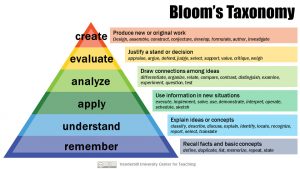
Photo by Lou Levit on Unsplash
Preamble
Modern education is more than just the regurgitation of facts. It seeks to entice students to be curious; to seek knowledge and expand upon their learning. This process’s ultimate goal is to provide students with a plethora of transferable skills such as: critical thinking, leadership, creativity, teamwork, and communication. As the rate of technological advancement continues to increase, rote memorization is not enough to keep up in the modern world. To be an asset to an employer, a future employee needs to have learned to possess the aforementioned skills. The question is then, how do we foster the growth of transferable skills, specifically critical thinking, while teaching students using digital formats.
How Important is it?
According to Teaching Critical Thinking Online by Hermann Astleitner, Critical thinking should be considered “as the most important skill when using the internet, because the Internet is full of false, incomplete, obsolete, etc. Information.” It has also been defined by Astleitner as,
“A higher-order thinking skill which mainly consists of evaluating arguments. It is a purposeful self regulatory judgement which results in interpretation, analysis, evaluation, and inference, as well as explanations of the evidential, conceptual, methodological, or contextual considerations, upon which the judgement is based.”
Indeed, critical thinking is at the upper end of Bloom’s Taxonomy of ordered thinkinging (seen below). This skill not only guides students in their evaluation of arguments but allows them, by engaging in an evaluative process, to learn material in a more efficient and orderly fashion. Having the ability to think critically is perhaps one of the most important skills a young learner will need to traverse an exceedingly complex society as they progress through life.

“Bloom’s Taxonomy” by Vandy CFT is licensed under CC BY 2.0
How to Teach Critical Thinking Online
It is important to remember before commencing with digital teaching that critical thinking can only essentially be taught if the higher order skills are being reached. As such, much like in the classroom, a student will need to evaluate a position, argue and potentially defend their points, and perhaps most importantly, collaborate with others. Learning critical thinking can not be done as effectively in solidarity; it is very difficult to argue and defend a position when you have no one to argue with. That said, sites such as snopes.com, or factcheck.org are sites I often visit to fact check information on social media, or inaccurate and skewed news articles. These sites can be used in conjunction with digital news sites to allow students to not only read about the world but then analyze and evaluate the efficacy of what they have read.
Alternatively, students are able to create and share their creations digitally, which would also help them learn critical thinking skills. Websites such as Hour of Code, Wix, Canva, SlideShare, and many many others offer free services for students to create meaningful products and share them. Some other ideas include but are not limited to:
- Creating a podcast
- Recording a song
- Writing and illustrating a comic strip
- Designing maps
- Creating video content
- Building blueprints
- Collaboratively creating a wiki
- Creating a local news feed
- Animating their favorite story
Ultimately, just because we are isolated during the COVID pandemic, there is no reason students are not able to be creative, get engaged, and learn vitally important transferable skills.
Recent Comments